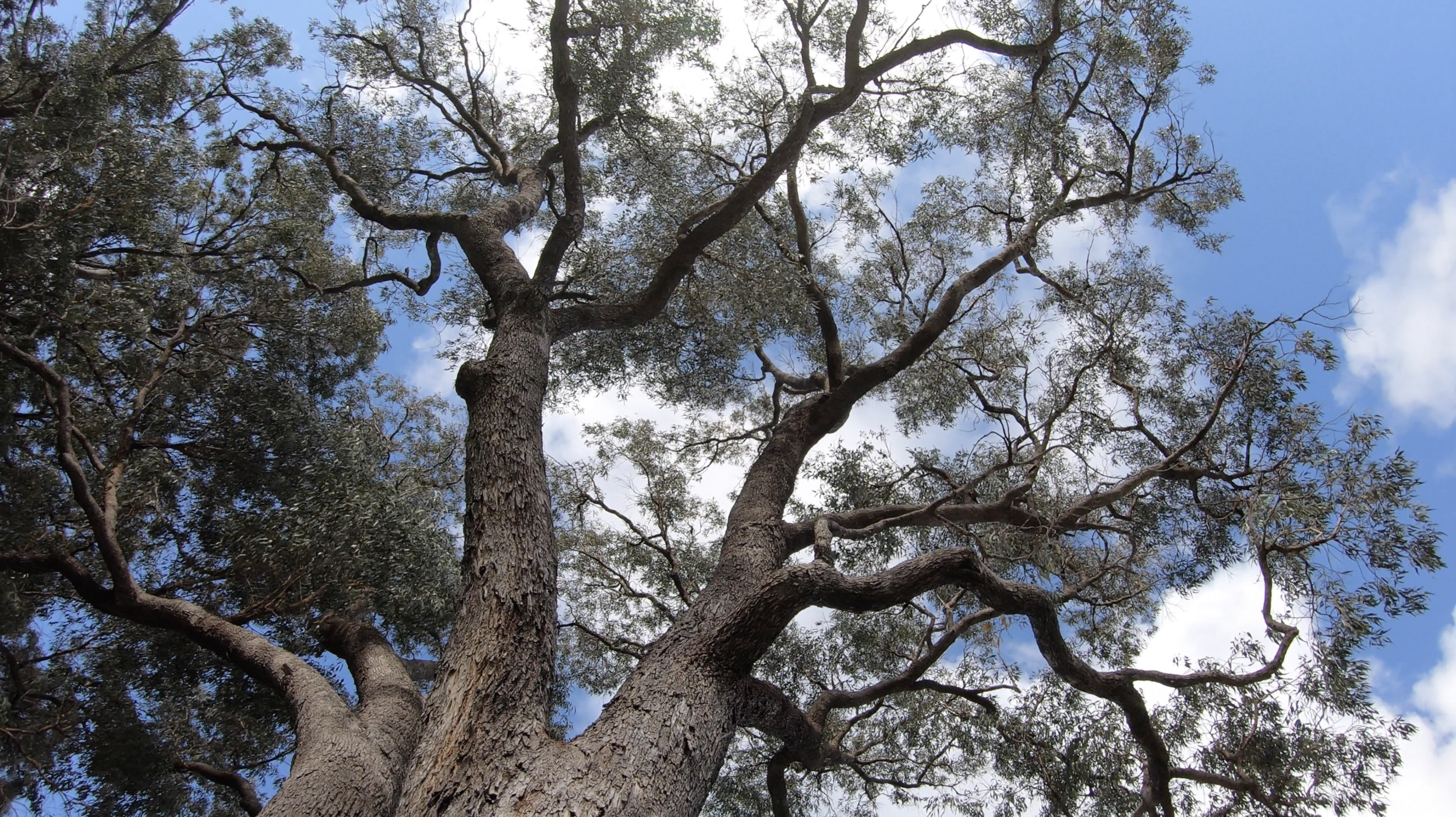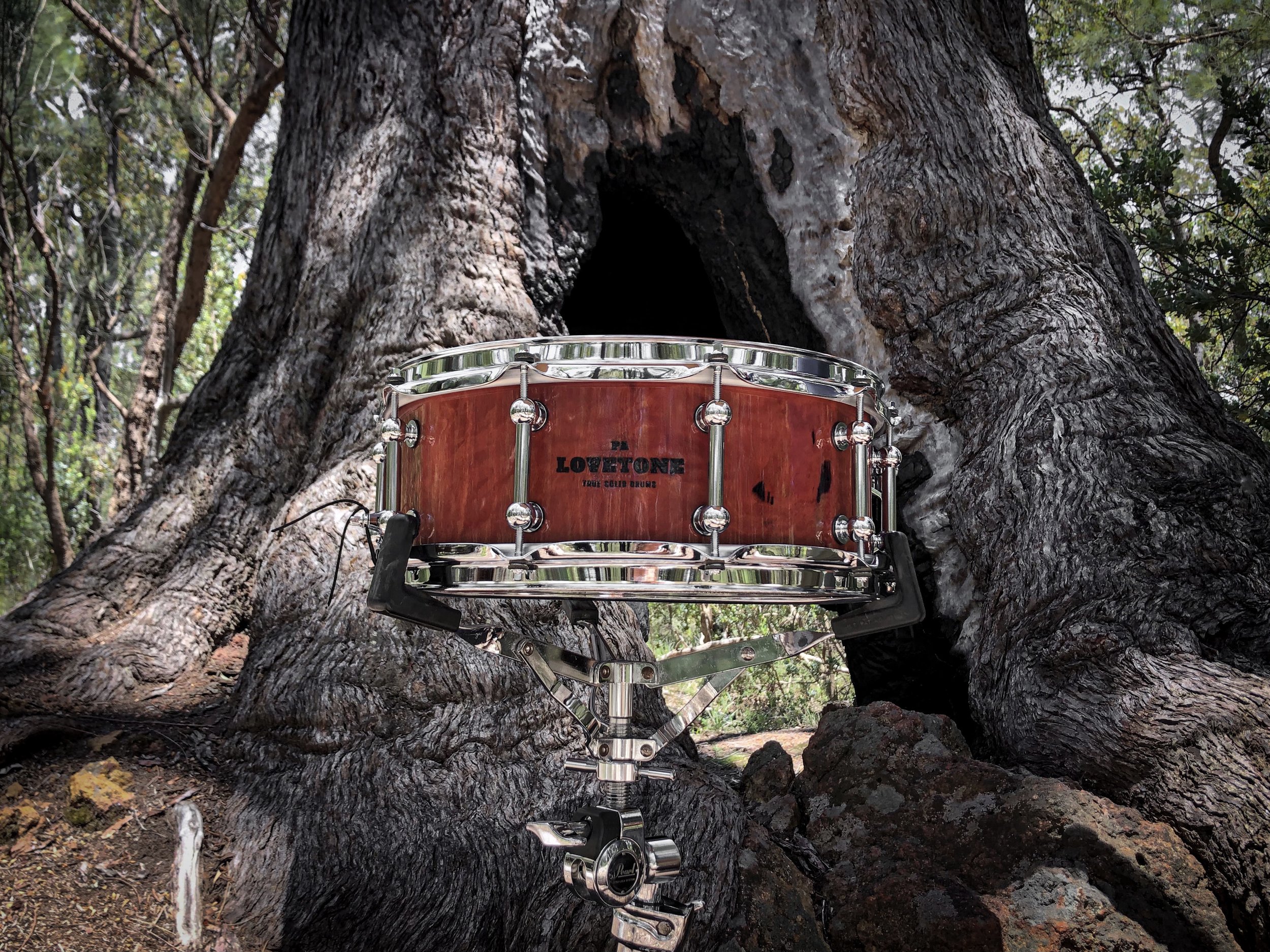Jarrah (Eucalyptus marginata)
Djarrah (in Noongar Language) and historically known as Swan River mahogany, is a tree in the myrtle family, endemic to the south-west of Western Australia. Famous for its stunning deep red hues, it is a popular timber for flooring, furniture and firewood, due to its straighter grain structure being easy to split, and easy to burn when dry.
-
"Ruby Reds"
Famous worldwide for its ruby red hues, and dense strength in its grain structure, it is a perfect candidate for furniture, flooring & art design. In our case, its gorgeous red tones and sometimes fiddle-backed grain can make for some incredible artworks of nature on our drums.
-

How to Identify a Jarrah
The tree itself can sometimes be mistaken for a Marri, however its most distinguishable feature is the shape of its gumnut. Jarrah has small, rounded gum nuts, while Marri’s have large, urn shaped nuts called “Honky Nuts”. Jarrah also has a much stringier bark compared to Marri’s chunkier, usually gum vein oozing bark. It’s leaves are less shiny with a margin (hence “Marginata”. The final clue lies in the flowers, which are long and narrow with a large peak.
-

"The Mighty Jarrah"
In recent decades Jarrah has been thrown into the spotlight for the unique tonality that it offers. Jarrah produces a dark, throaty almost metallic note. In its lower register it provides a dark, rich tone (as can be heard in our 14x5.5 demo video), with its medium and upper registers providing more of a metallic, throaty explosiveness similar to a metal snare drum, with an ear splitting sharp crack.
-

WOOD FACTS
TYPE: Hardwood
COLOUR: Dark-red, Pinkish-red.
GRAIN STRUCTURE: Relatively coarse but even, mostly straight, slightly interlocked.
BARK. Dark grey and stringy
DENSITY: Green 1170 kg/m3, Air-dry 820 kg/m3. Basic Density 670 kg/m3
JANKA SCALE: Green 5.7 KN, Dry 8.5 KN
Tonewoods: Jarrah
Paul Loveridge (PA Lovetone) talks Jarrah & it’s use in True Solid Snare Drum construction. Filmed in Mundaring, Western Australia.












